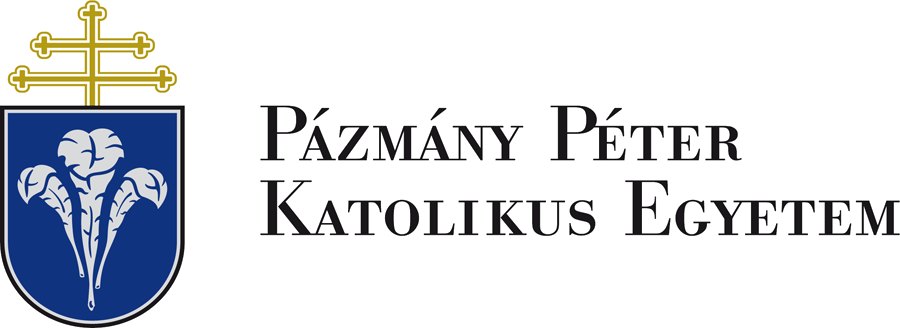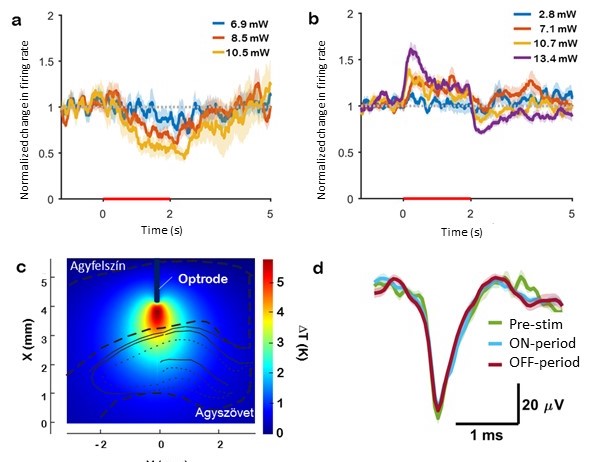

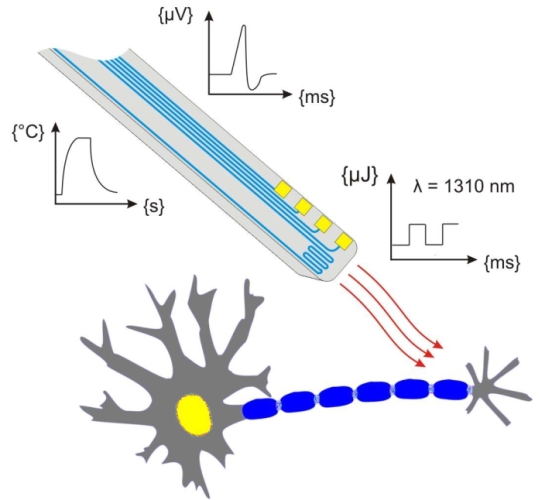
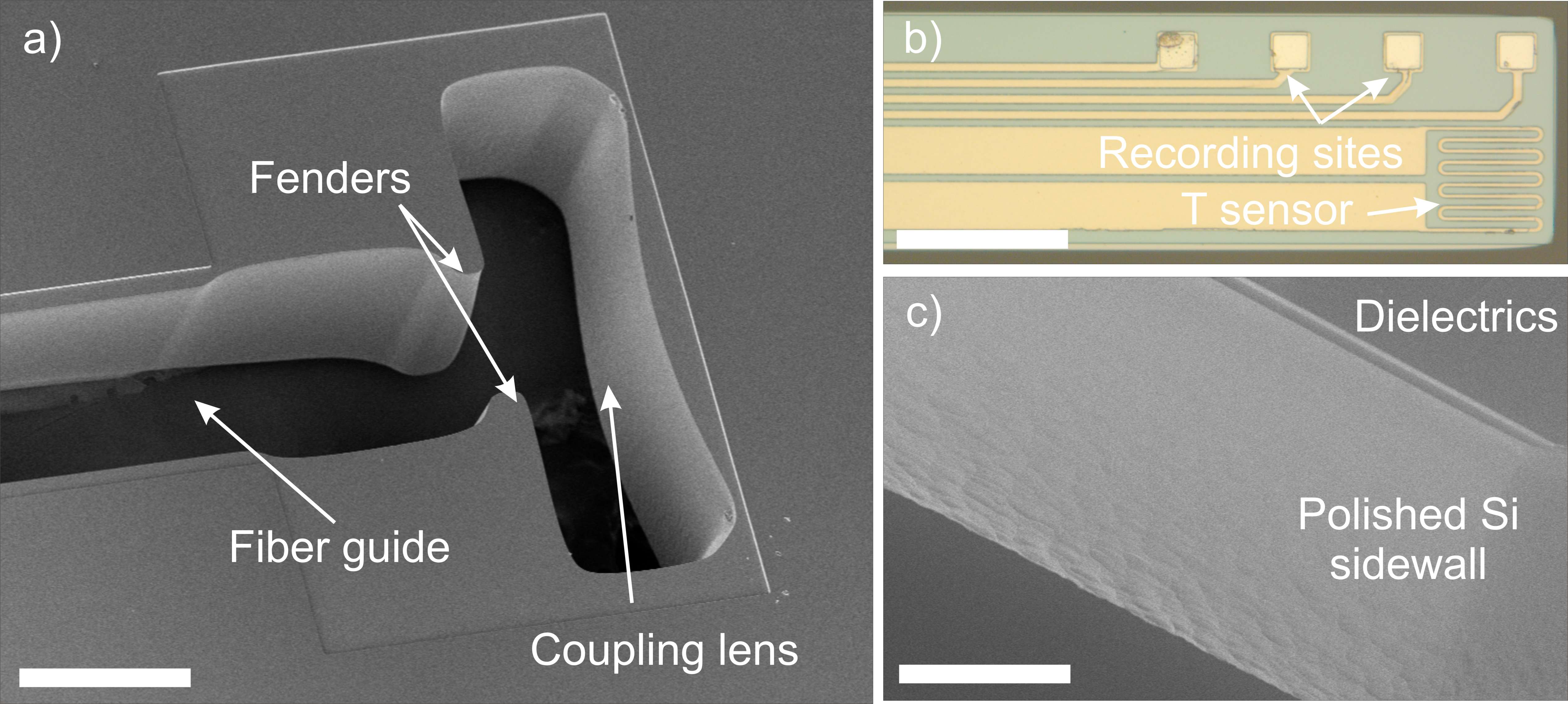
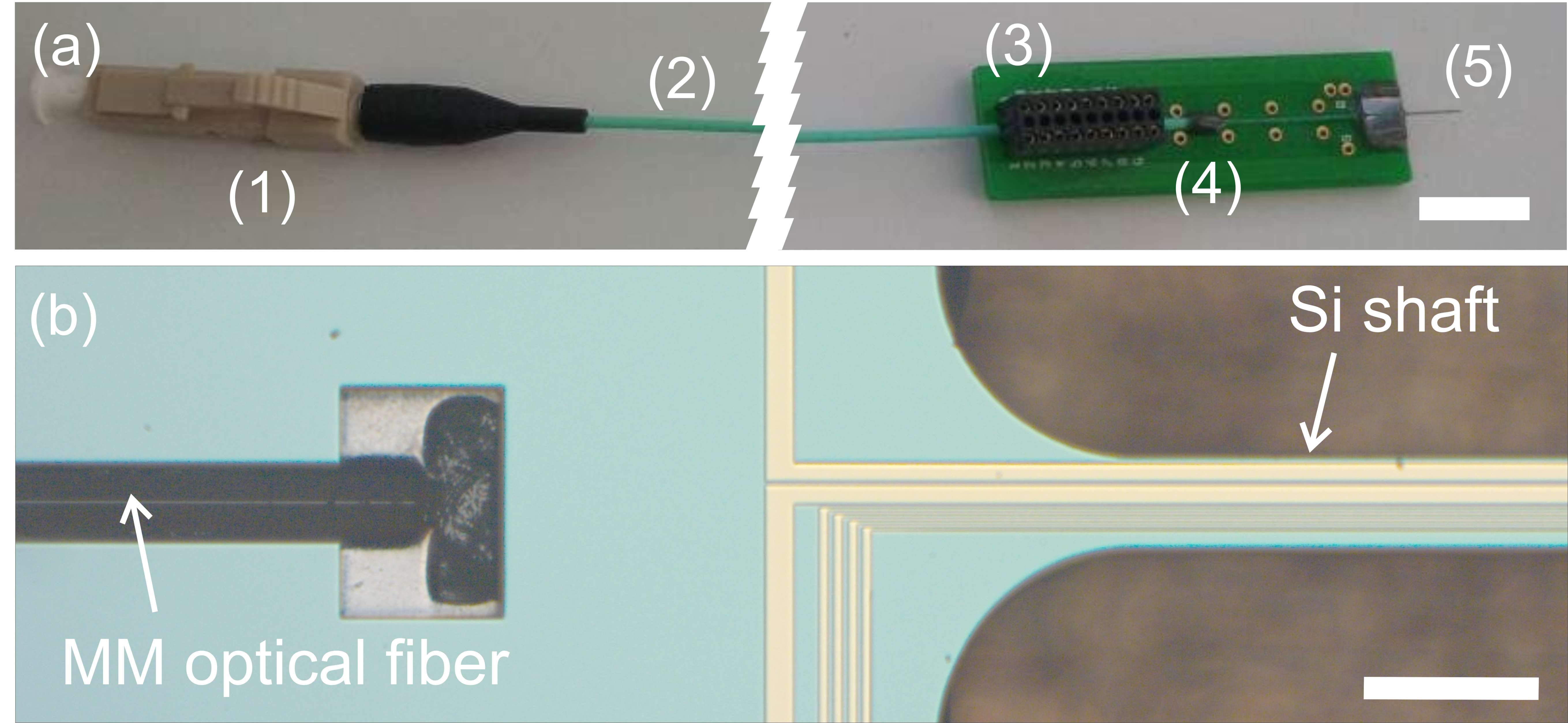
Our group proposed a novel technical approach to go beyond the current limitations of deep tissue infrared neural stimulation. We developed a penetrating neural probe capable of delivering near infrared light and simultaneously measuring background tissue temperature and action potentials. The mechanical functionality of the silicon substrate was successfully transformed to act as a waveguide due to wet chemical etching processes [Kiss, 2016] integrated into the fabrication technology of fully functional microelectrodes [Horváth, 2018]. Using this optrode device, we have demonstrated that low-energy (below 13 mW) continuous wave infrared light can be efficiently used to either excite or suppress the activity of neuronal population in the cortex of rats [Horváth, 2020].
More details in the following papers:
Á. C. Horváth, Ö. C. Boros, L. Komáromi, S. Borbély, P. Koppa, P. Barthó, Z. Fekete, Infrared neural stimulation and inhibition using an implantable silicon photonic microdevice, Microsystems & Nanoengineering 6 (2020) 44
ÁC Horváth, ÖC Boros, Ö Sepsi, S Beleznai, P Koppa, Z Fekete: A multimodal microtool for spatially controlled infrared neural stimulation in the deep brain tissue, Sensors & Actuators B-Chemical 263 (2018) 77-86
M. Kiss, P. Földesy, Z. Fekete: Optimization of a Michigan-type silicon microprobe for infrared neural stimulation, Sensors & Actuators B-Chemical 224 (2016) 676-682
